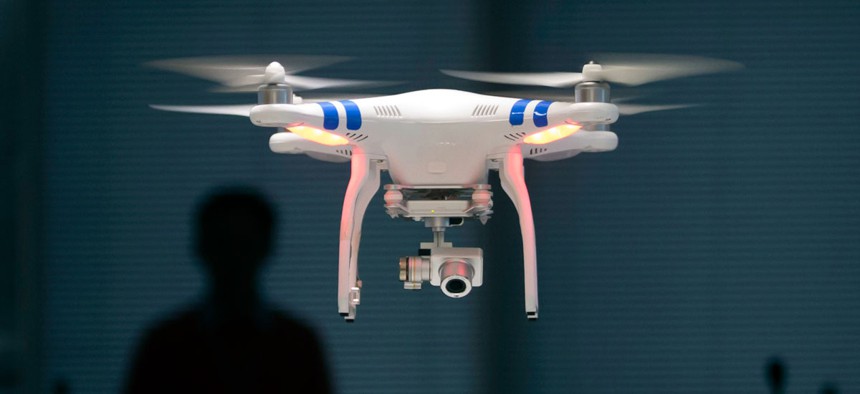Microsoft Is Using Drones to Predict Disease Outbreaks

Kin Cheung/AP
By catching mosquitoes, these drones could help scientists learn about—and react to—the way diseases become epidemics.
Drones and mosquitoes have a lot in common: they both buzz around and annoy, and both can draw blood. But while mosquitoes spread disease, Microsoft is trying to teach drones to fight epidemics.
By catching mosquitoes, these drones could help scientists learn about—and react to—the way diseases become epidemics.
Microsoft, founded by a man who is not a fan of mosquitoes, wants to develop drones to detect and catch mosquitoes. Researchers on the ominously named Project Premonition will then take blood samples from the mosquitoes to determine if they are carrying diseases from animals they’ve bitten, or any diseases they’re carrying themselves.
The idea is that by knowing what sorts of diseases are circulating in the wild, scientists will be better able to mitigate the potential for outbreaks and epidemics. Right now, it’s difficult to manually get this sort of data from animals that live in inhospitable areas—drones could change that.
The team went to Granada in March to see if they could use a drone to capture and transport mosquitoes—the team says it hopes to have a drone that it has been taught to do this work on its own in five years. Microsoft told Quartz that it won’t be building its own drones, but will modify consumer drones to run autonomously.
Getting robots to do things on their own is not a simple task—it requires complex computer vision systems and computers that are aware of their surroundings. Lots of people are working on it. Google is trying to make autonomous cars. The US Department of Defense just held a competition where many robots tried to complete tasks autonomously, but they generally just fell over.
James Pipas, a professor from the University of Pittsburgh working on the project, said in the announcement video that if the team can get these drones working on their own, they would like to create “a global system… that detects new infectious agents and monitors their movements as they emerge.”
In other words, we may soon have a network of drones flying overhead, detecting infections as they happen—if aviation authorities allow thatto happen.





